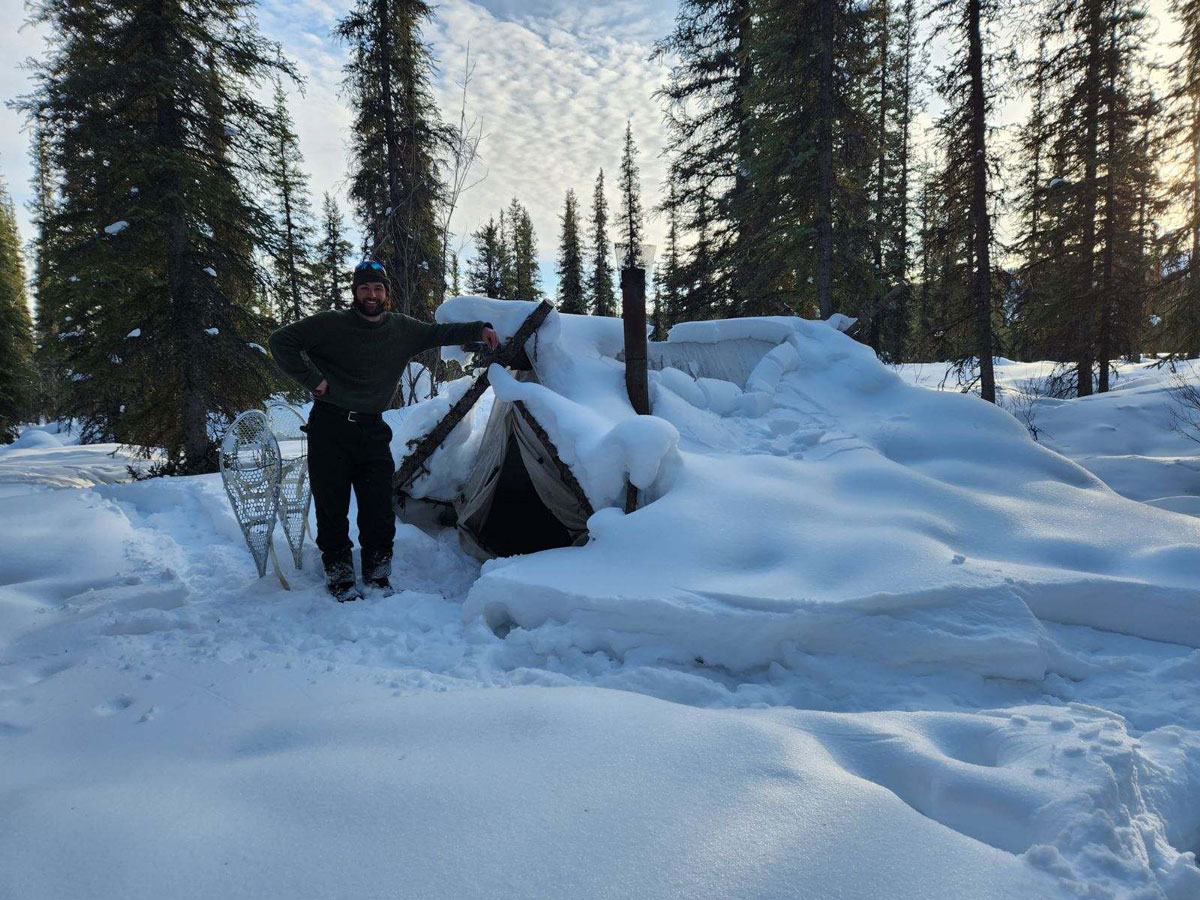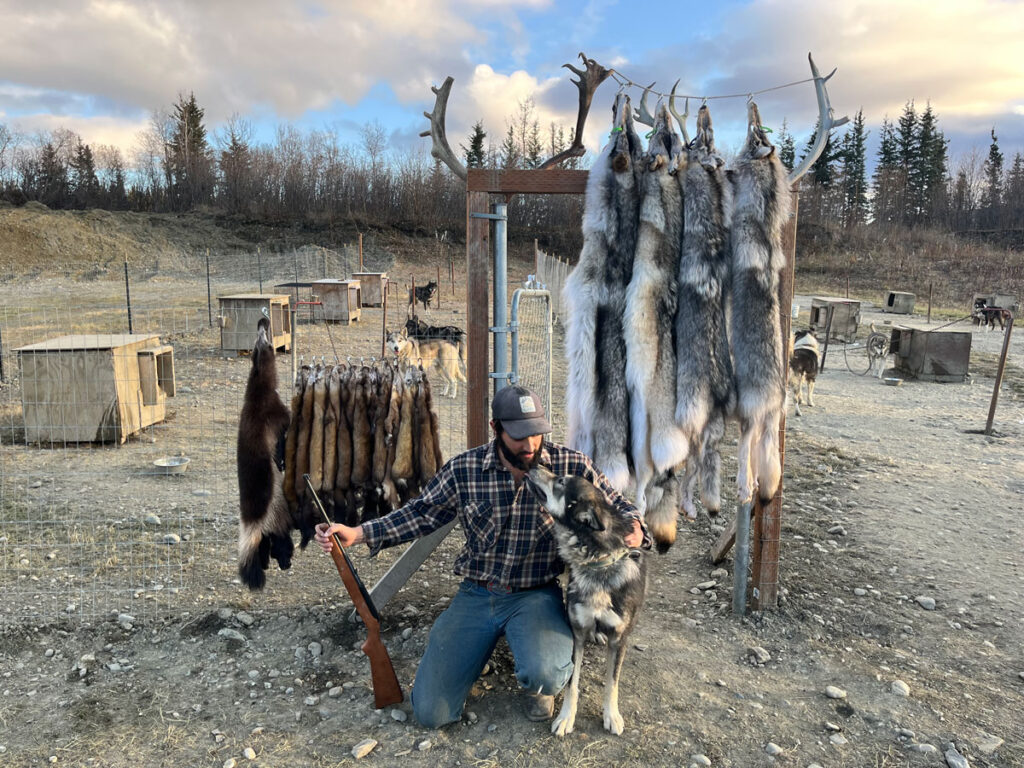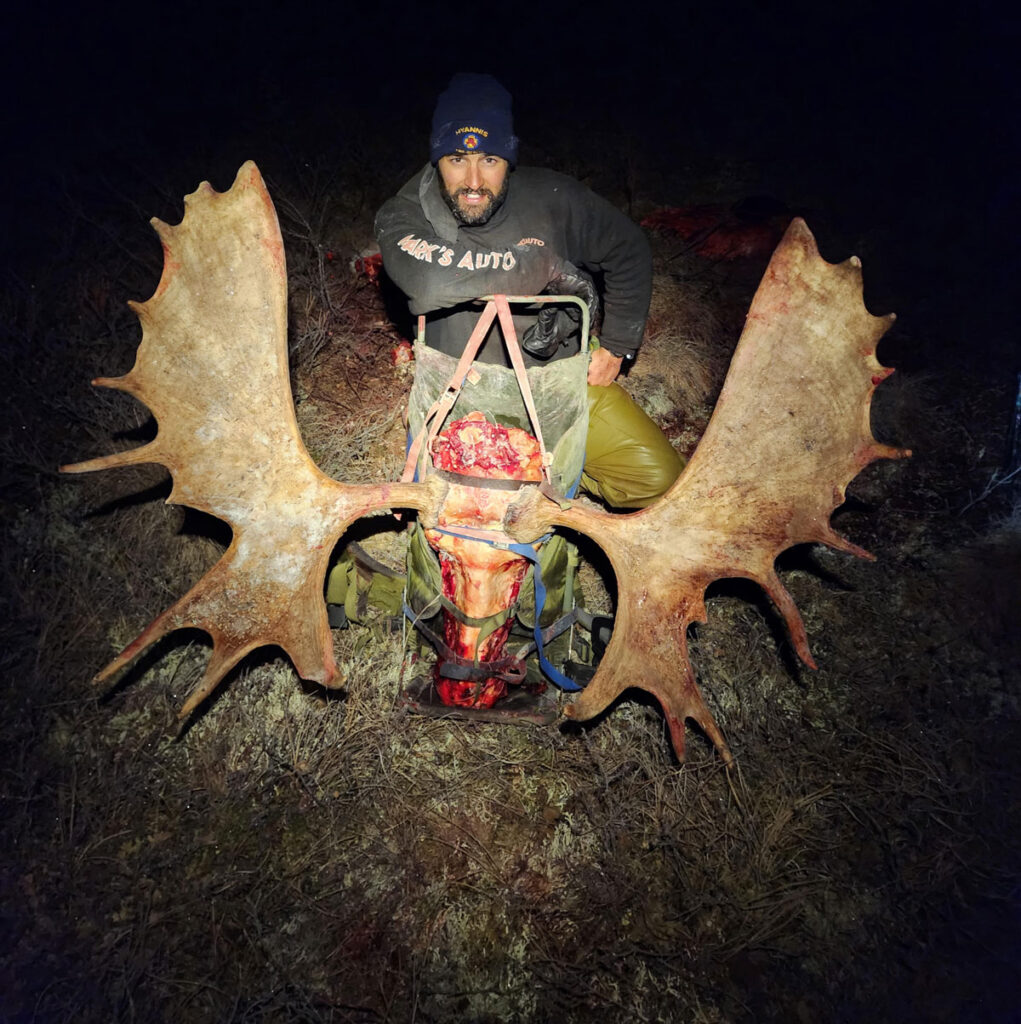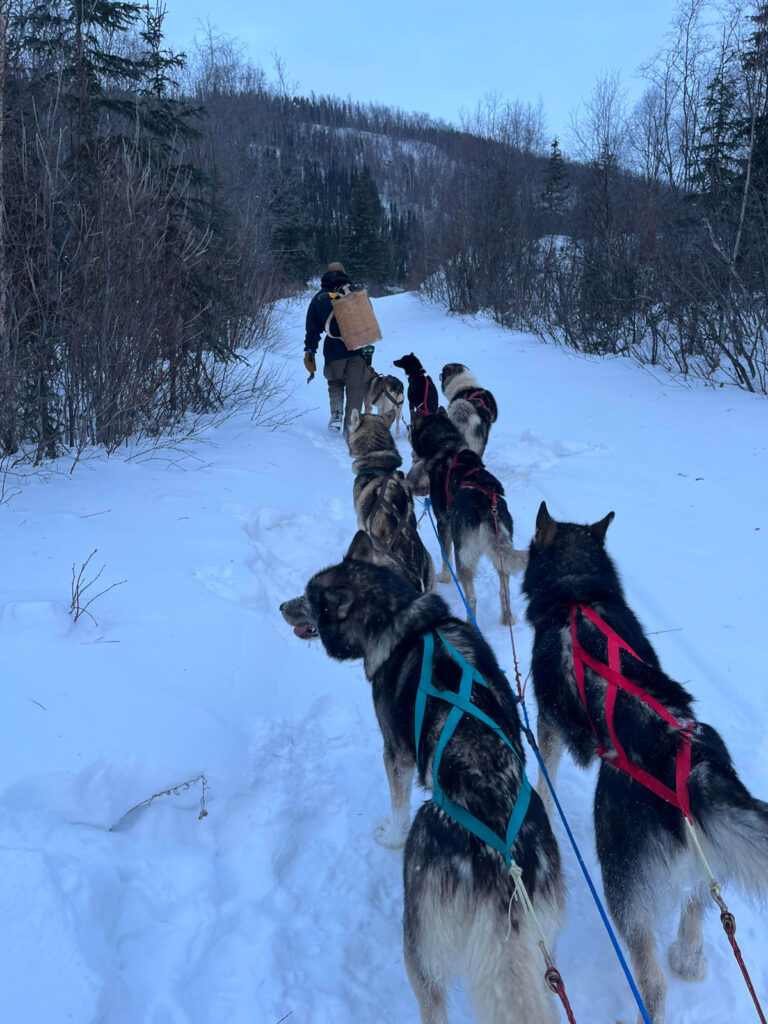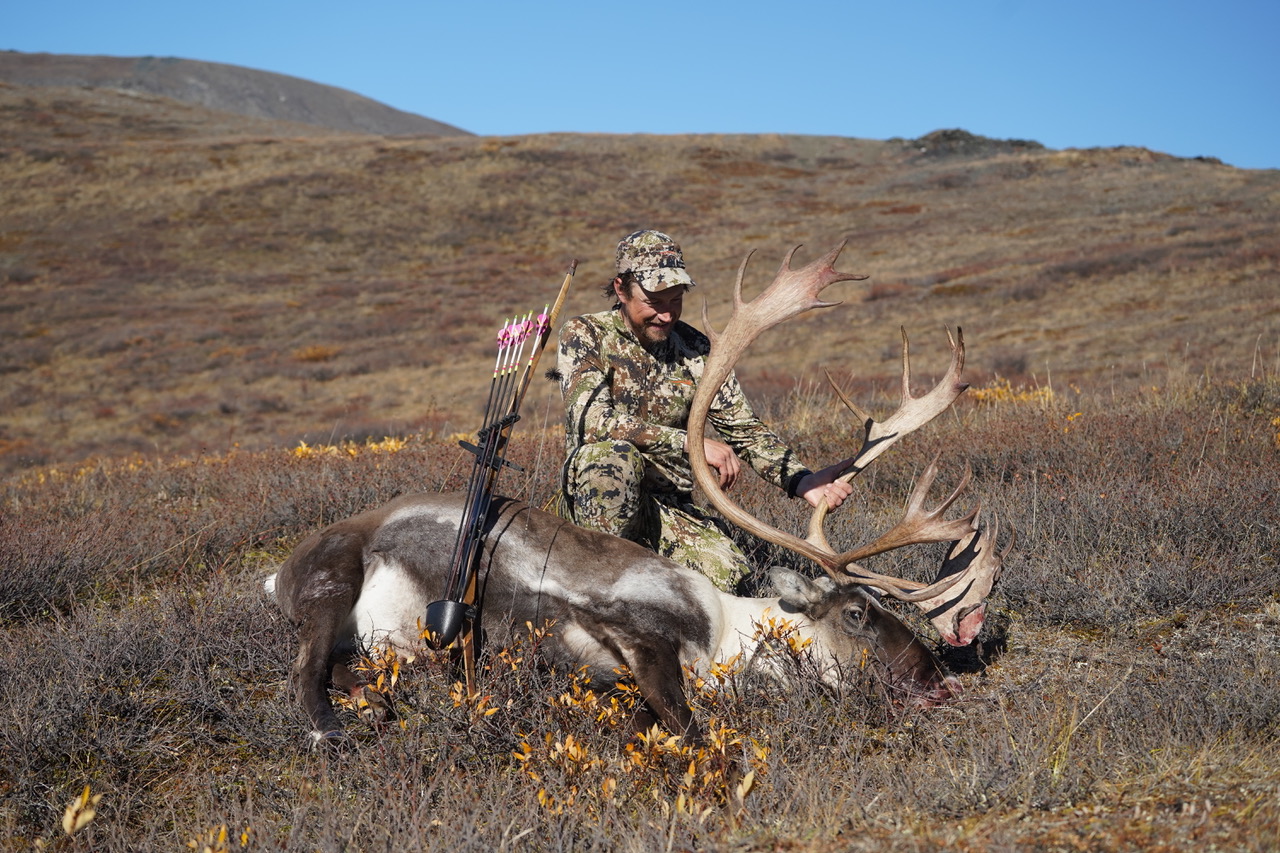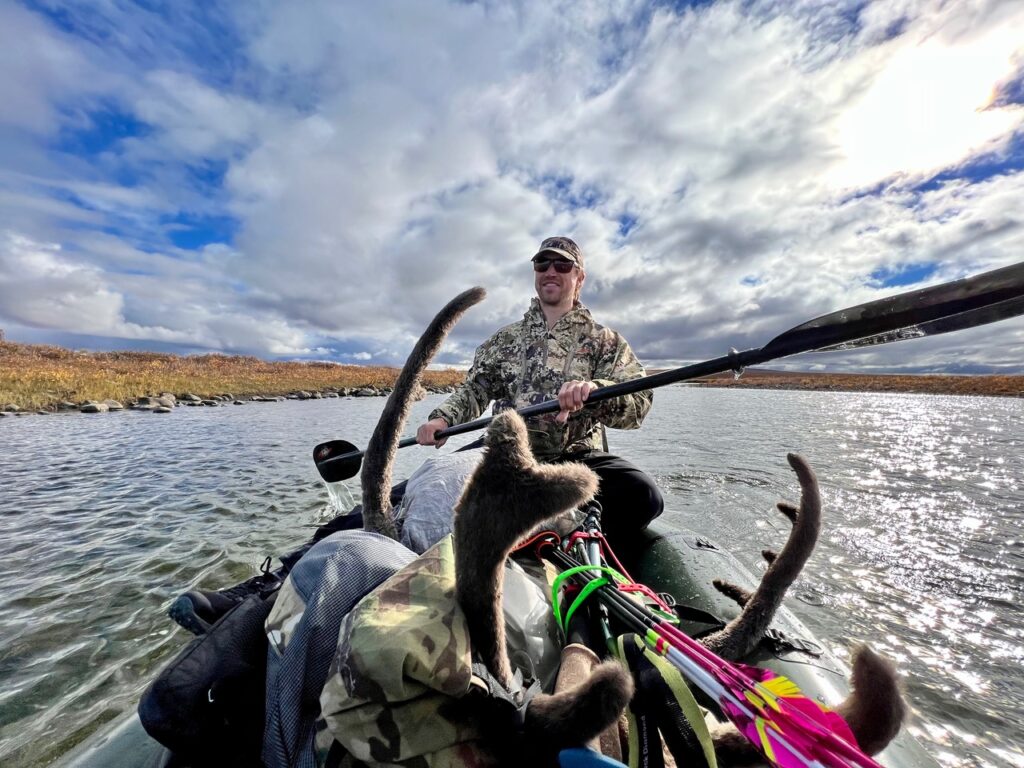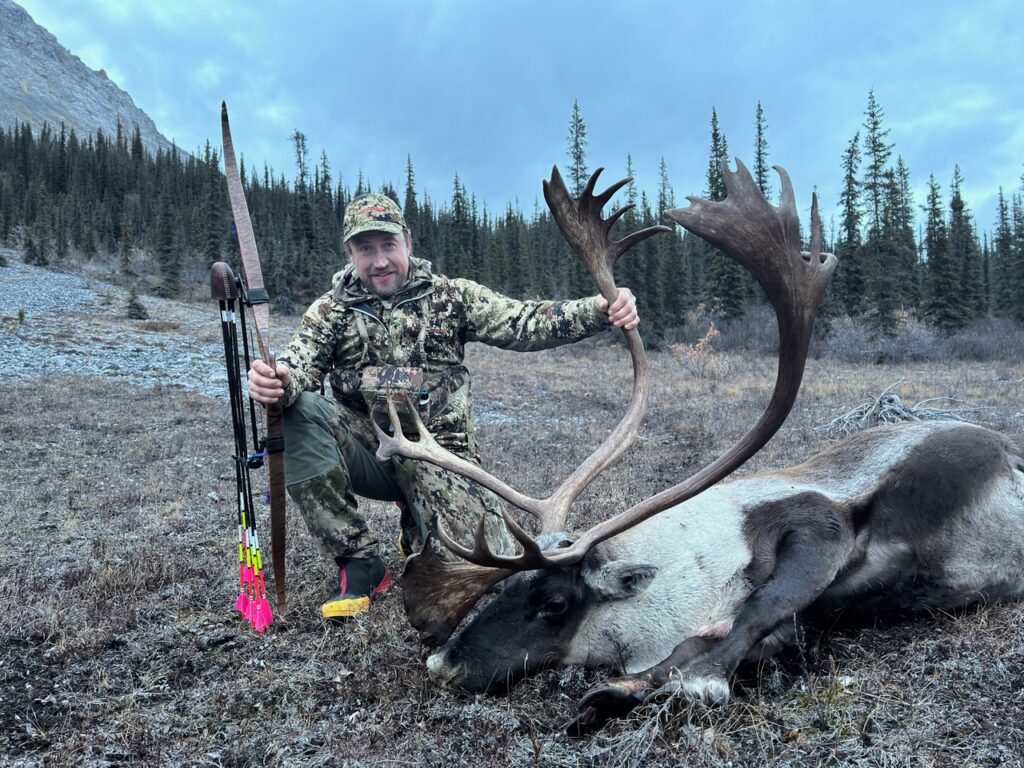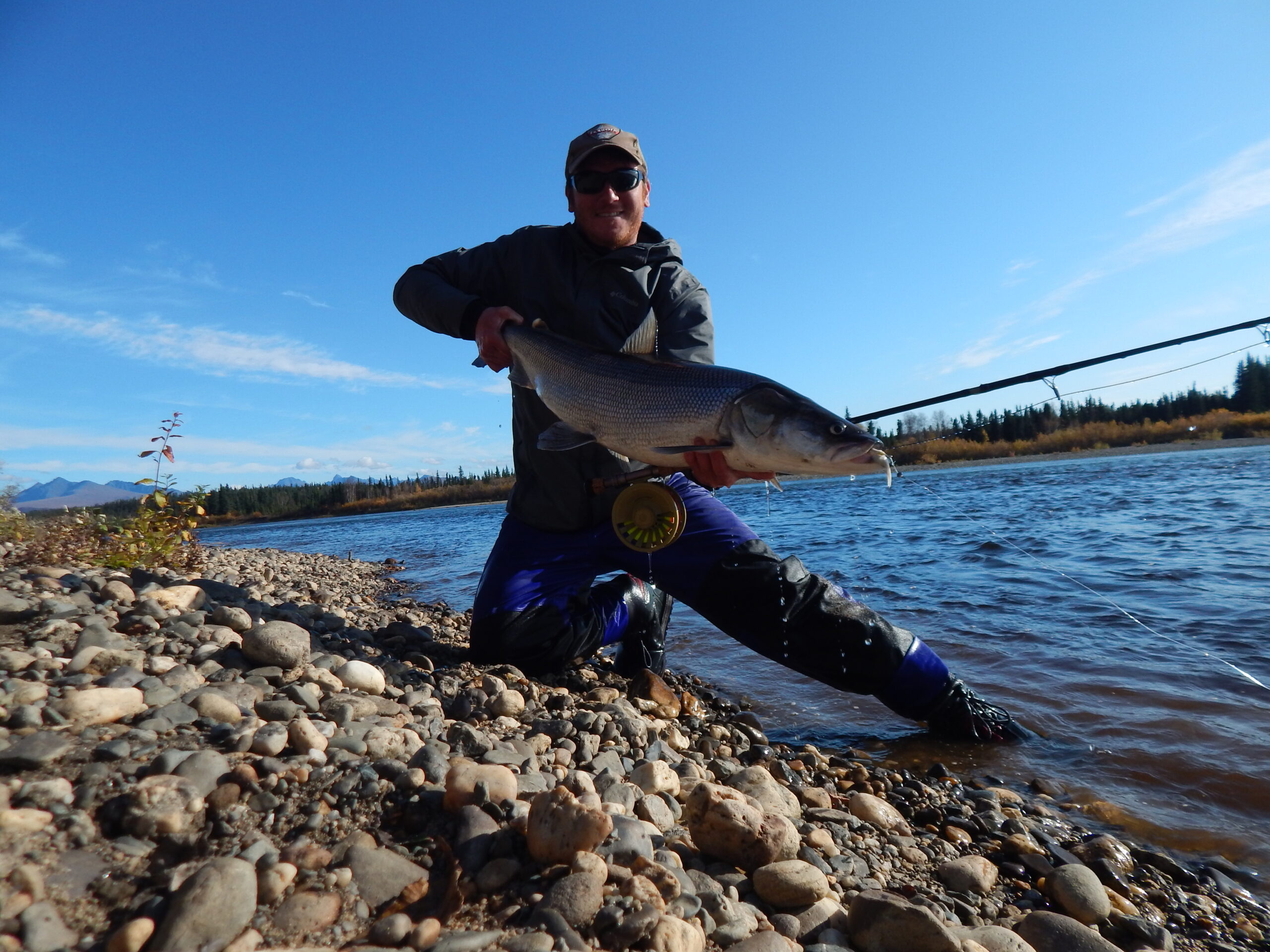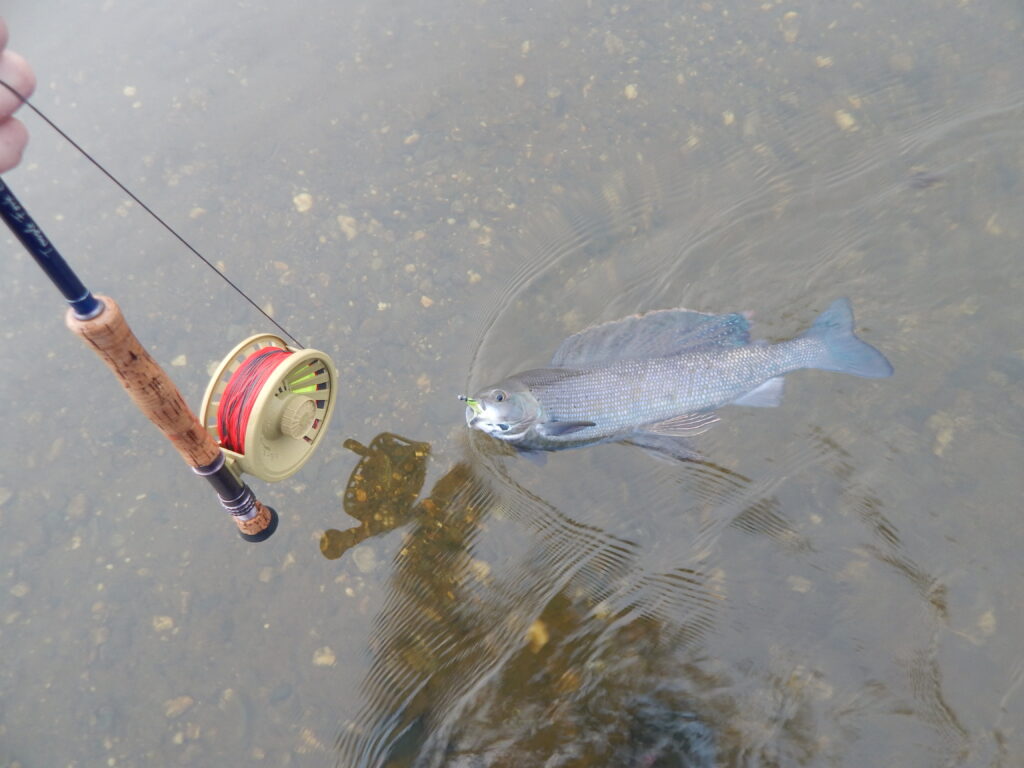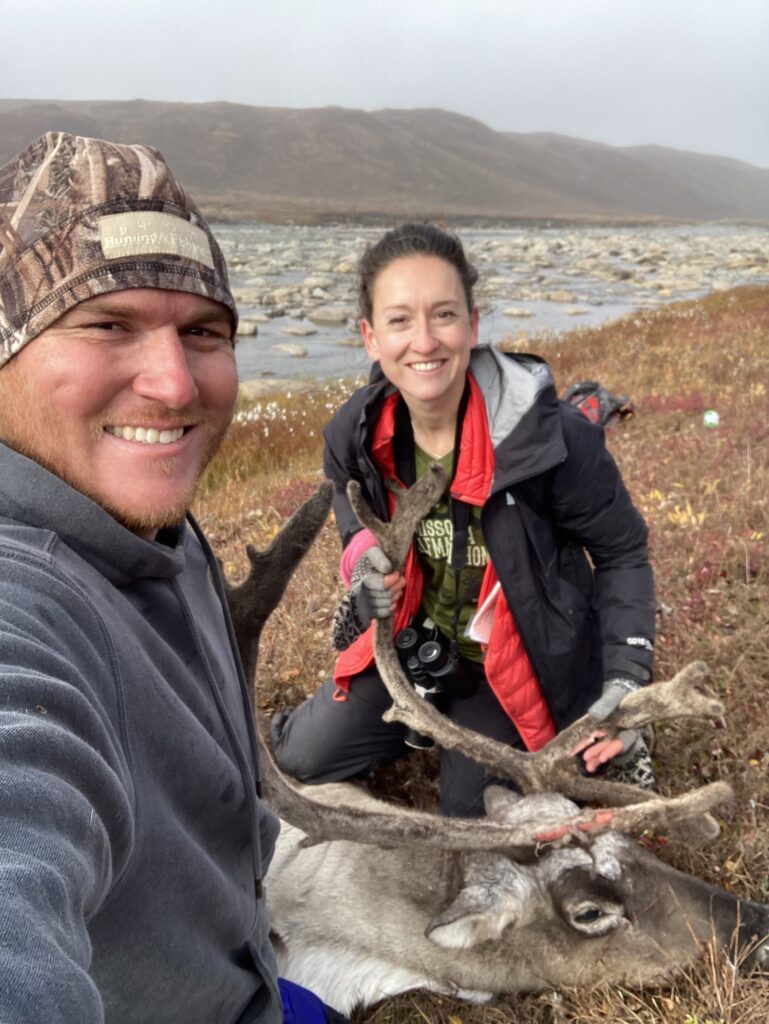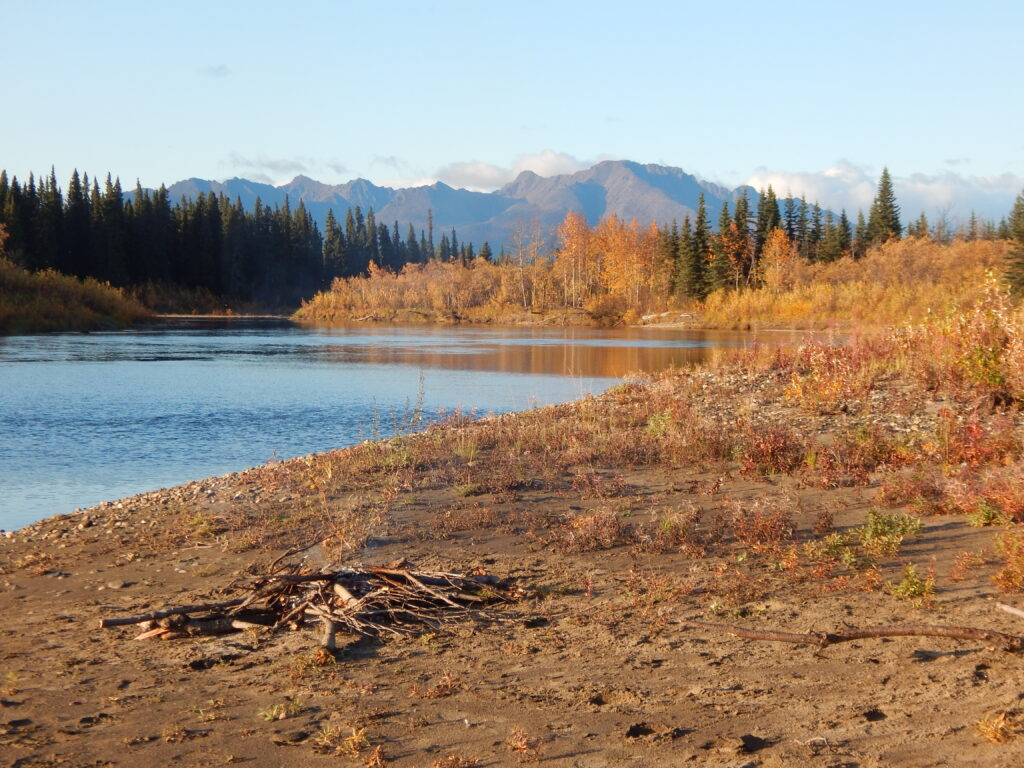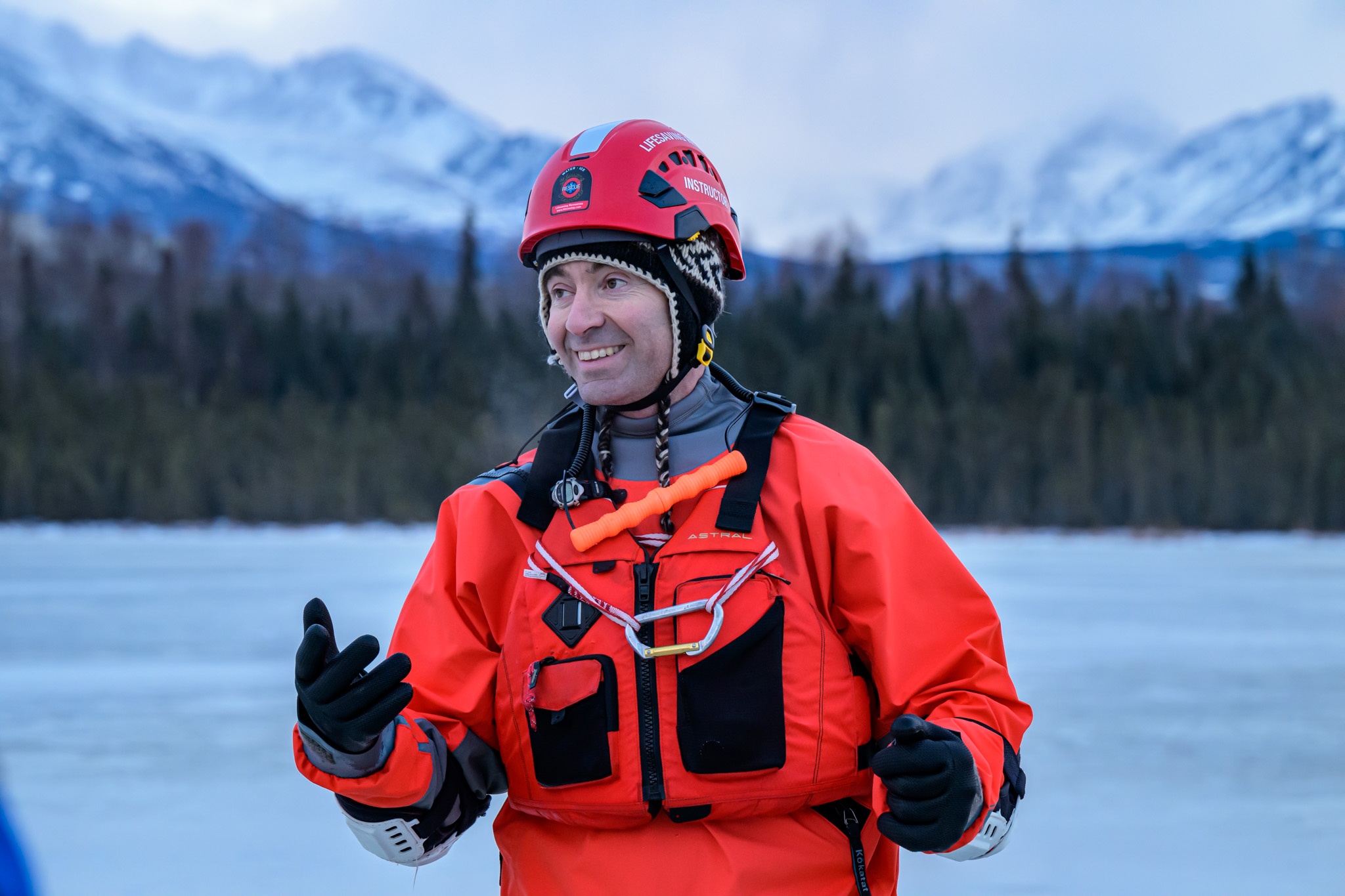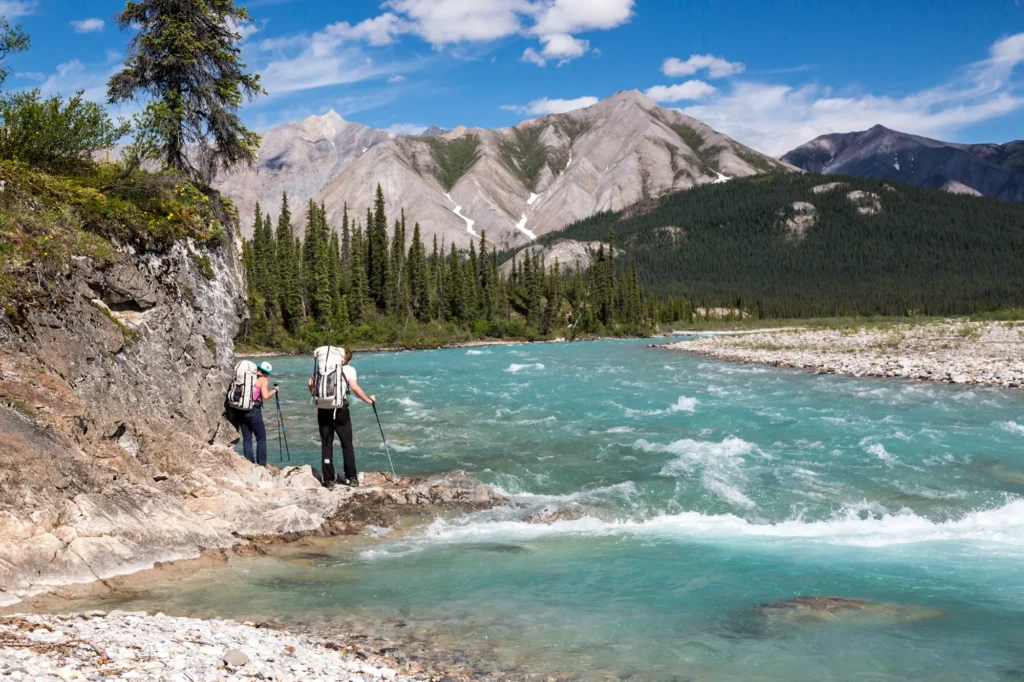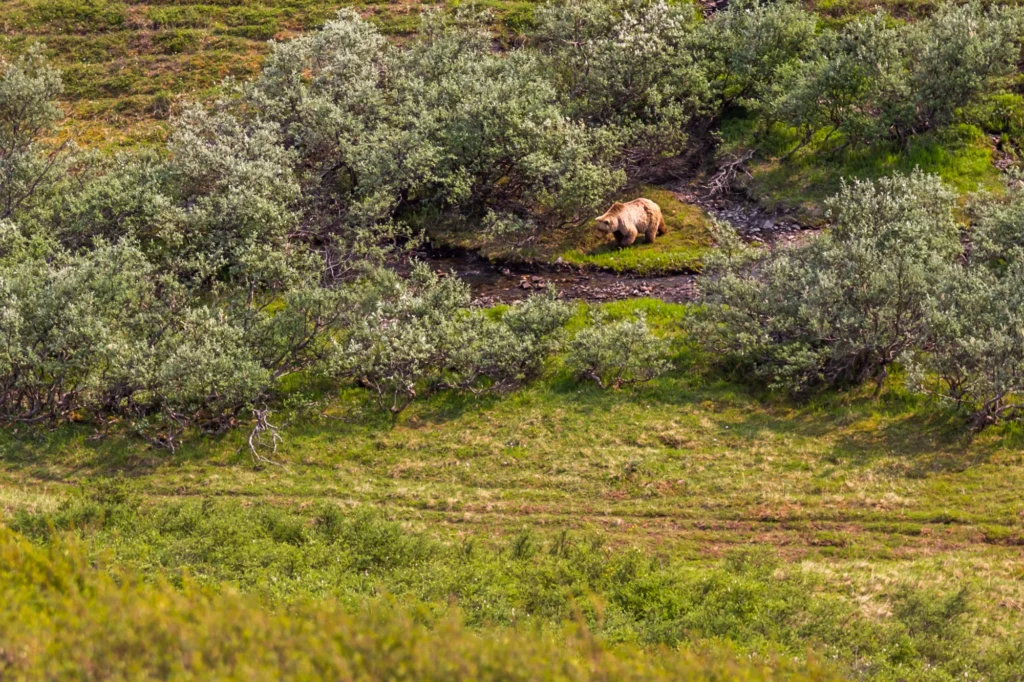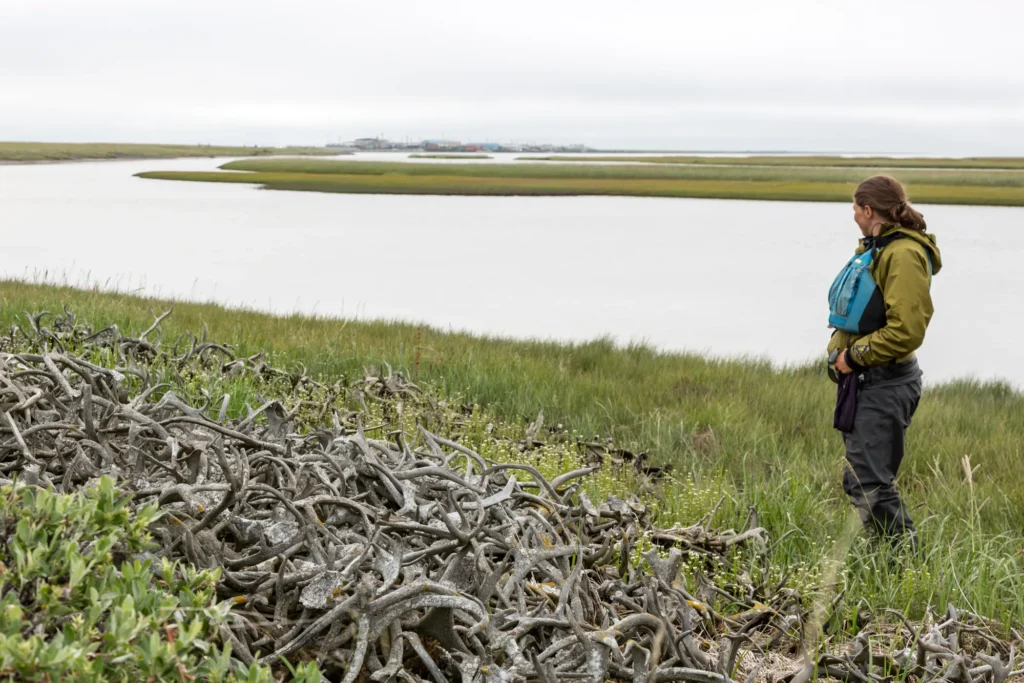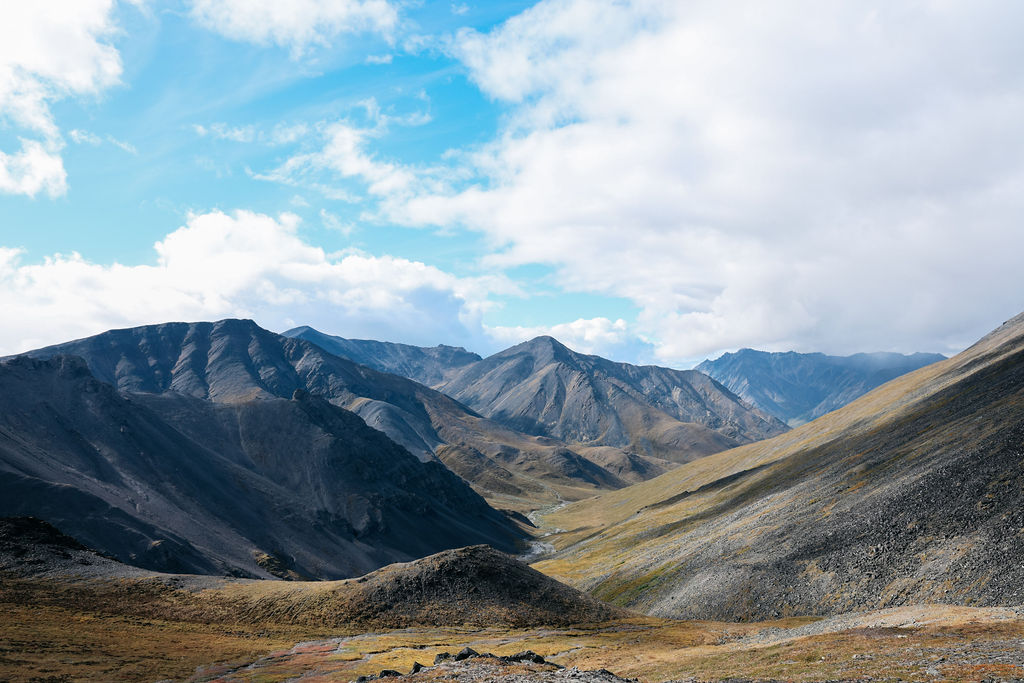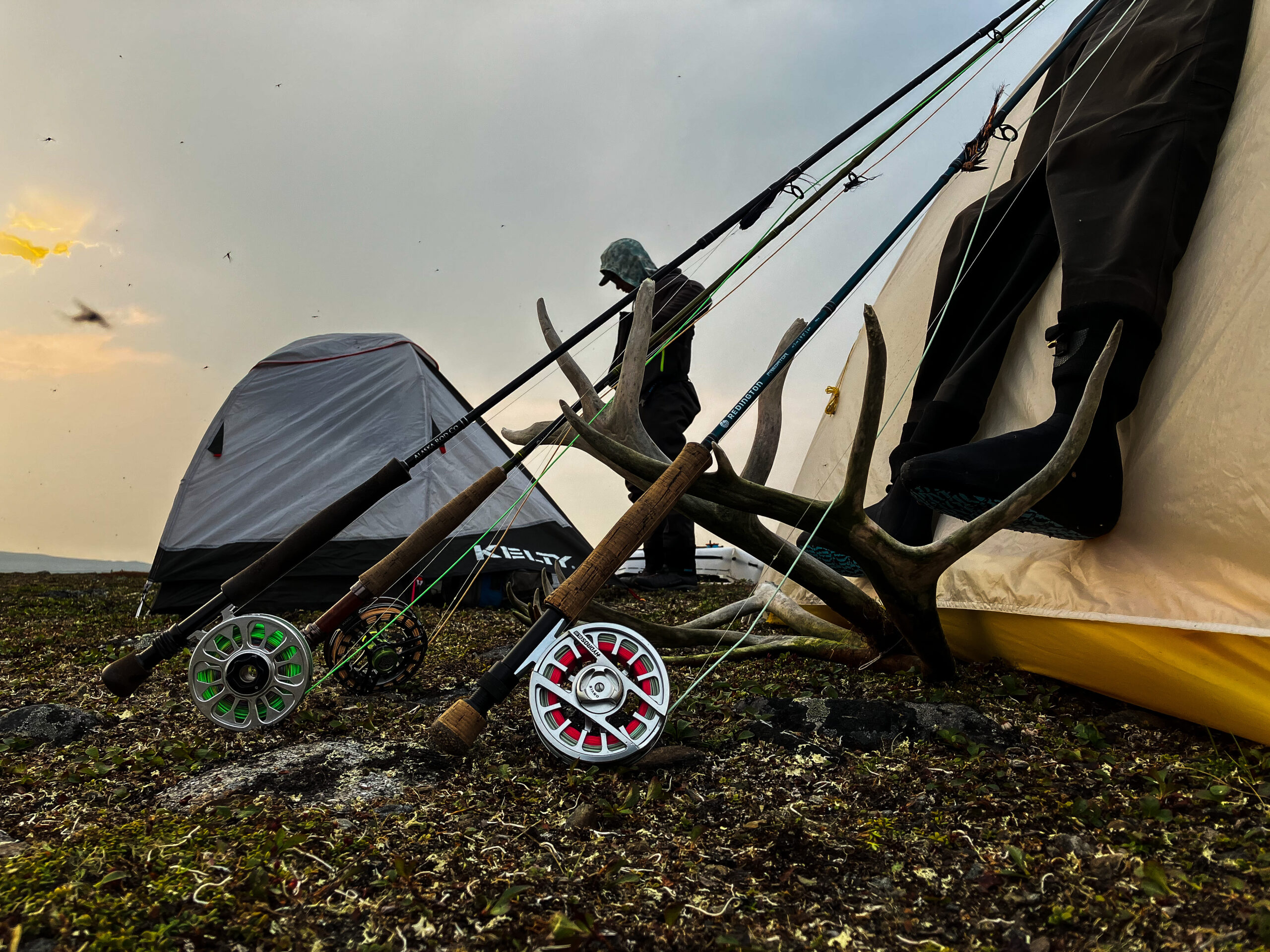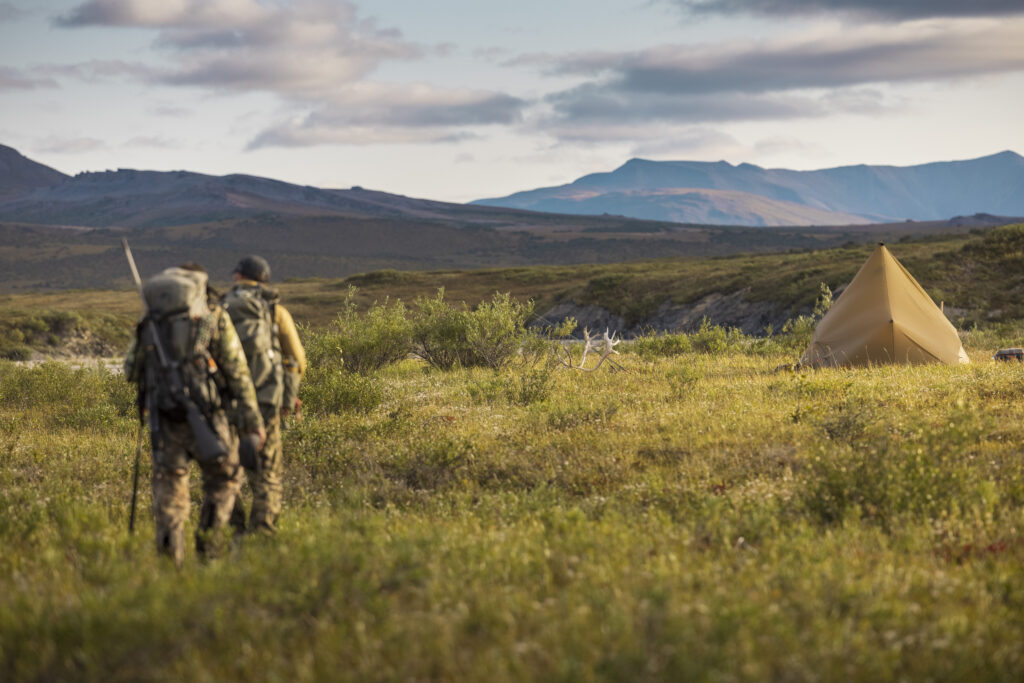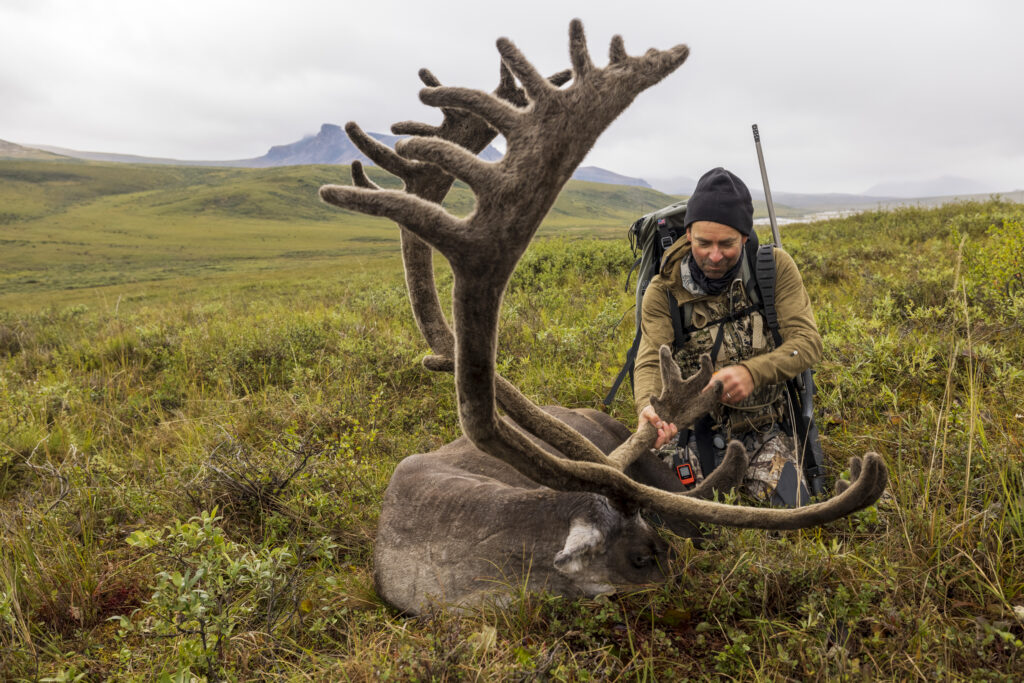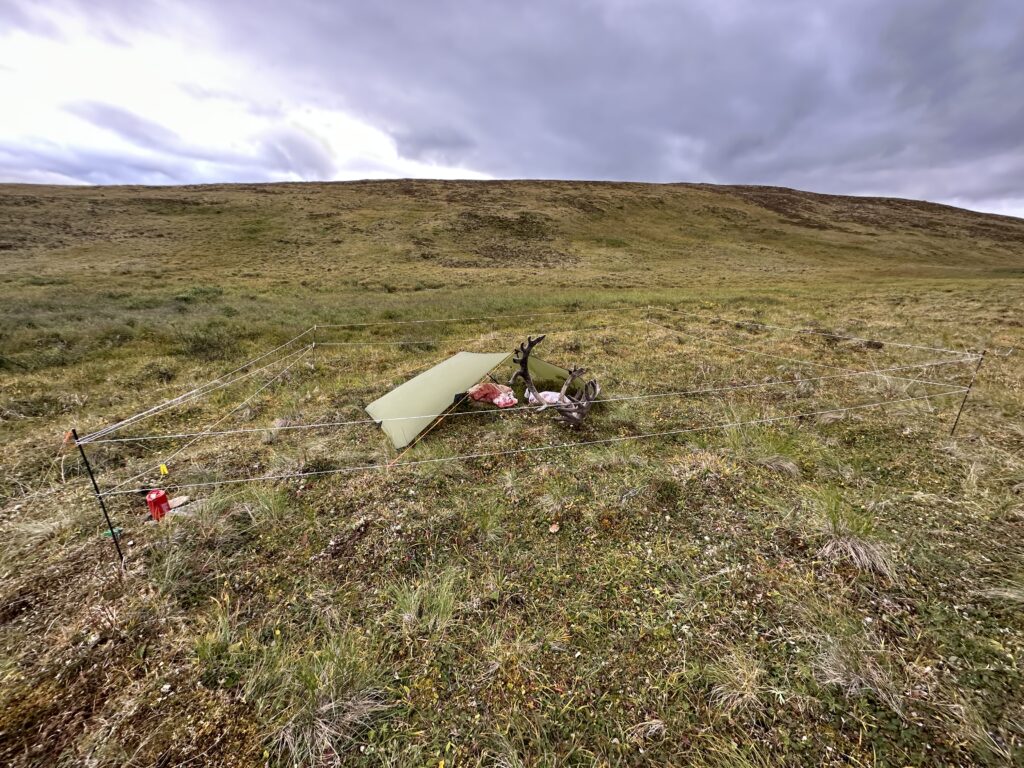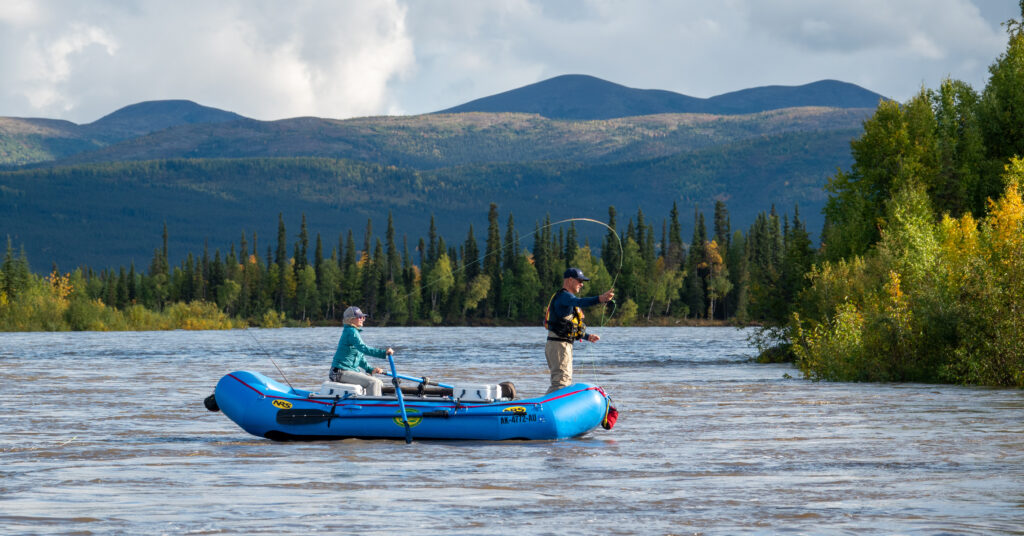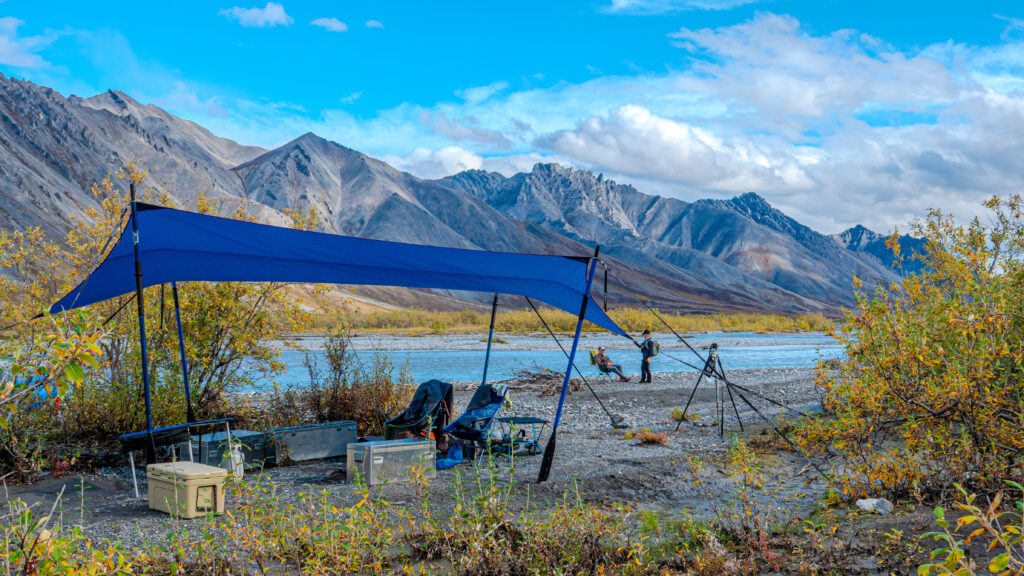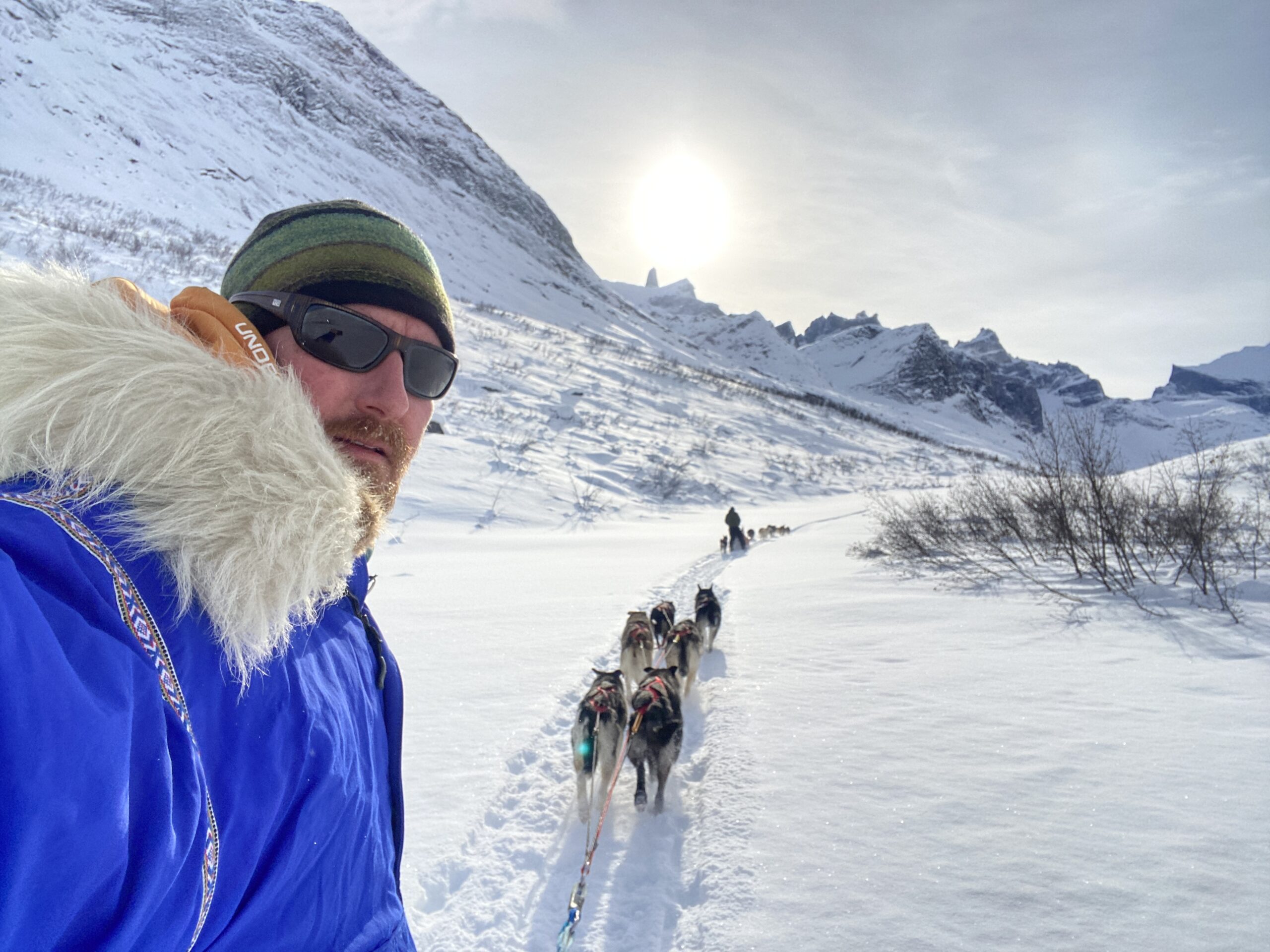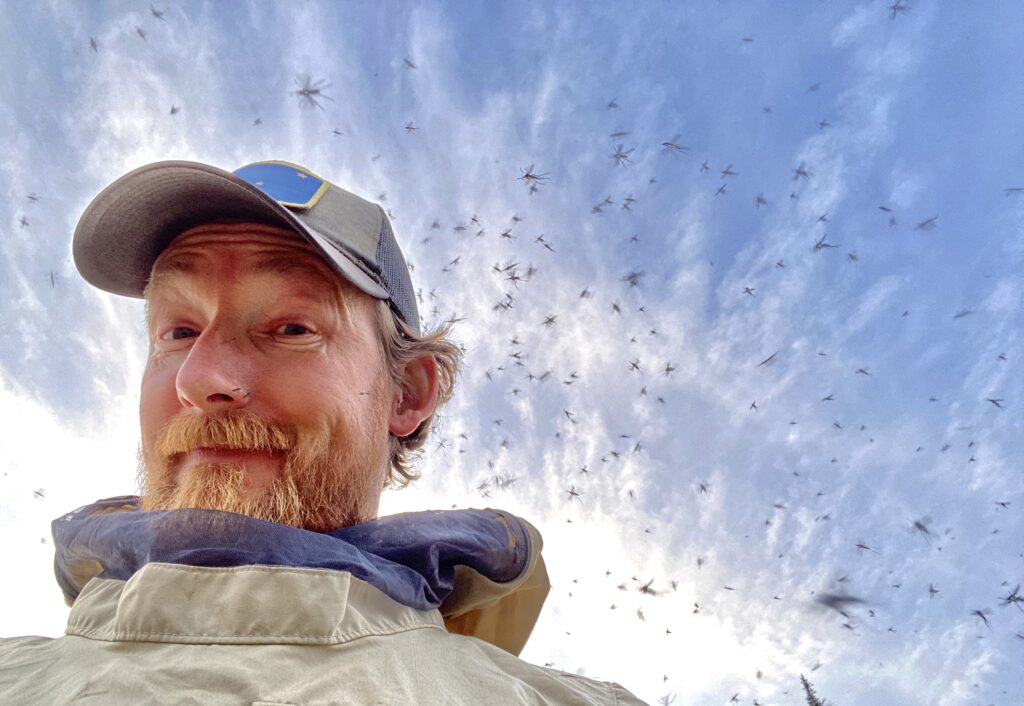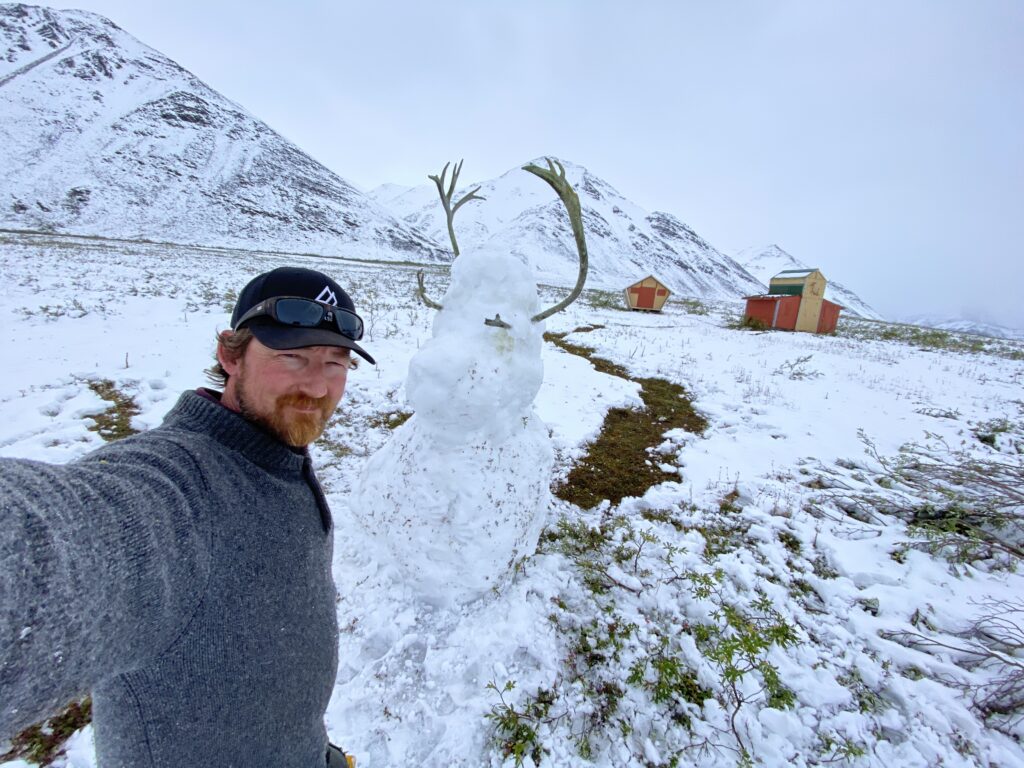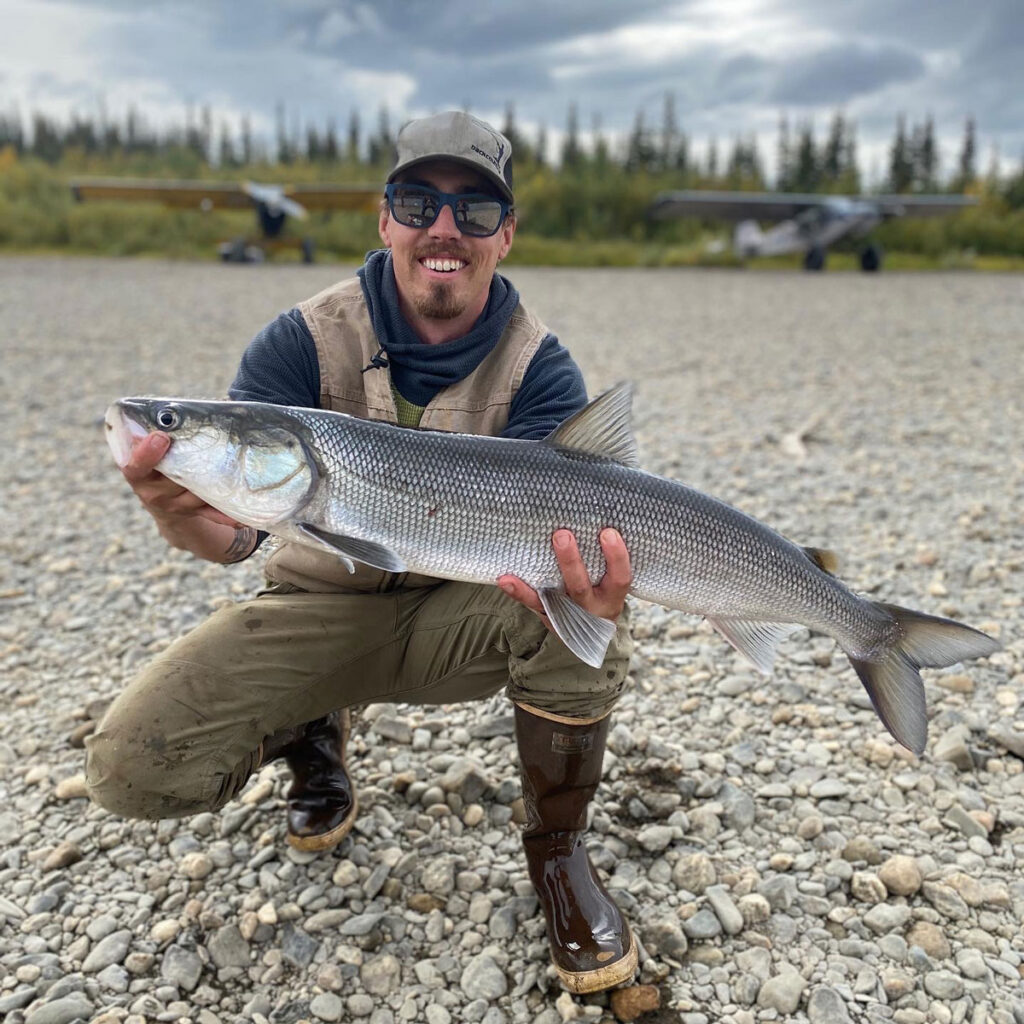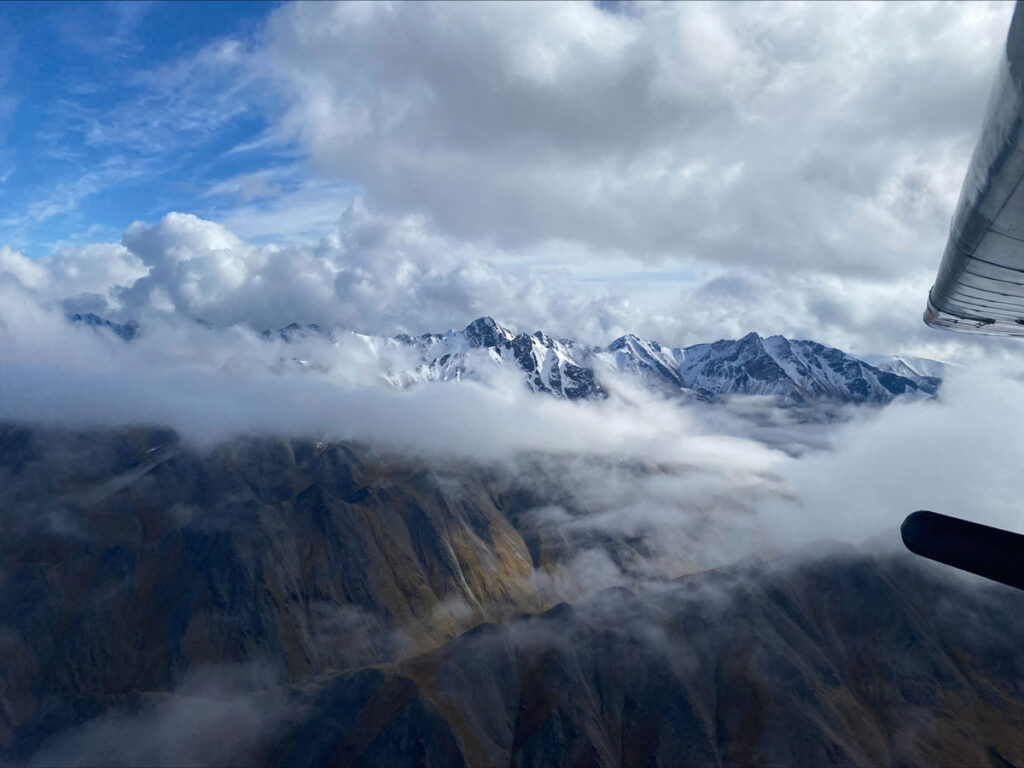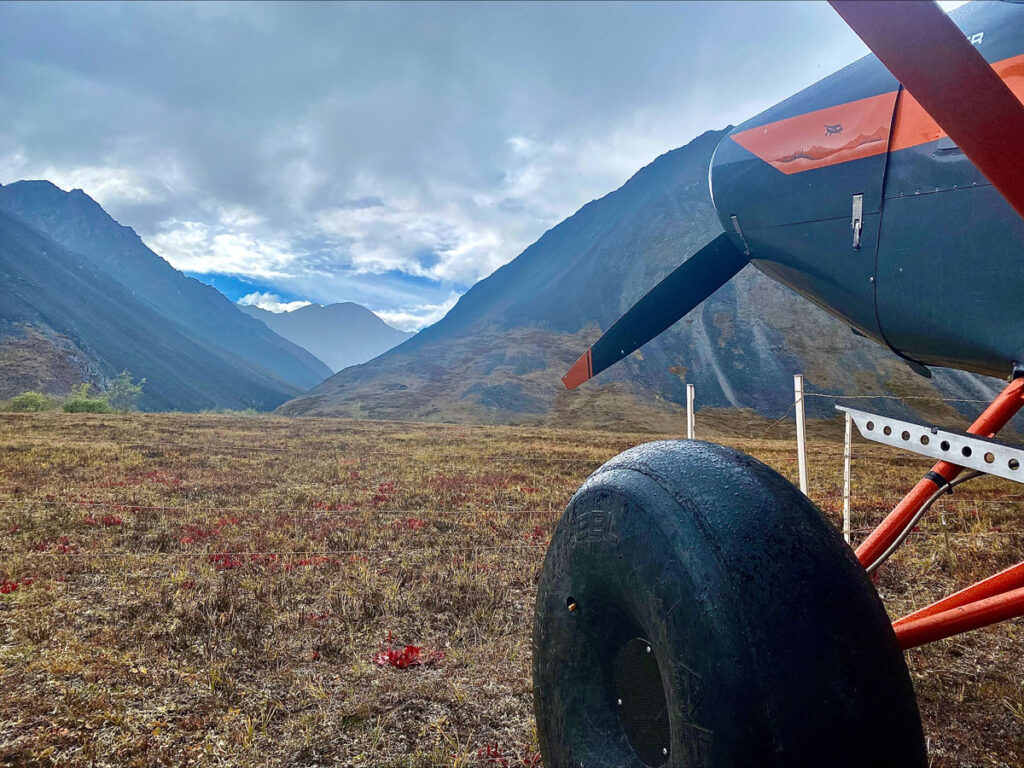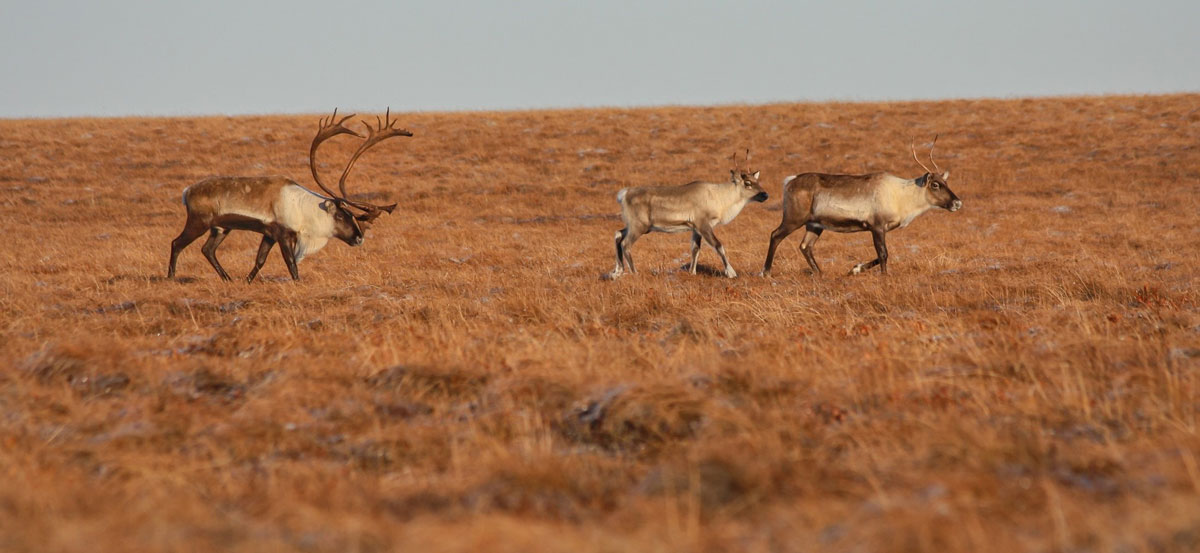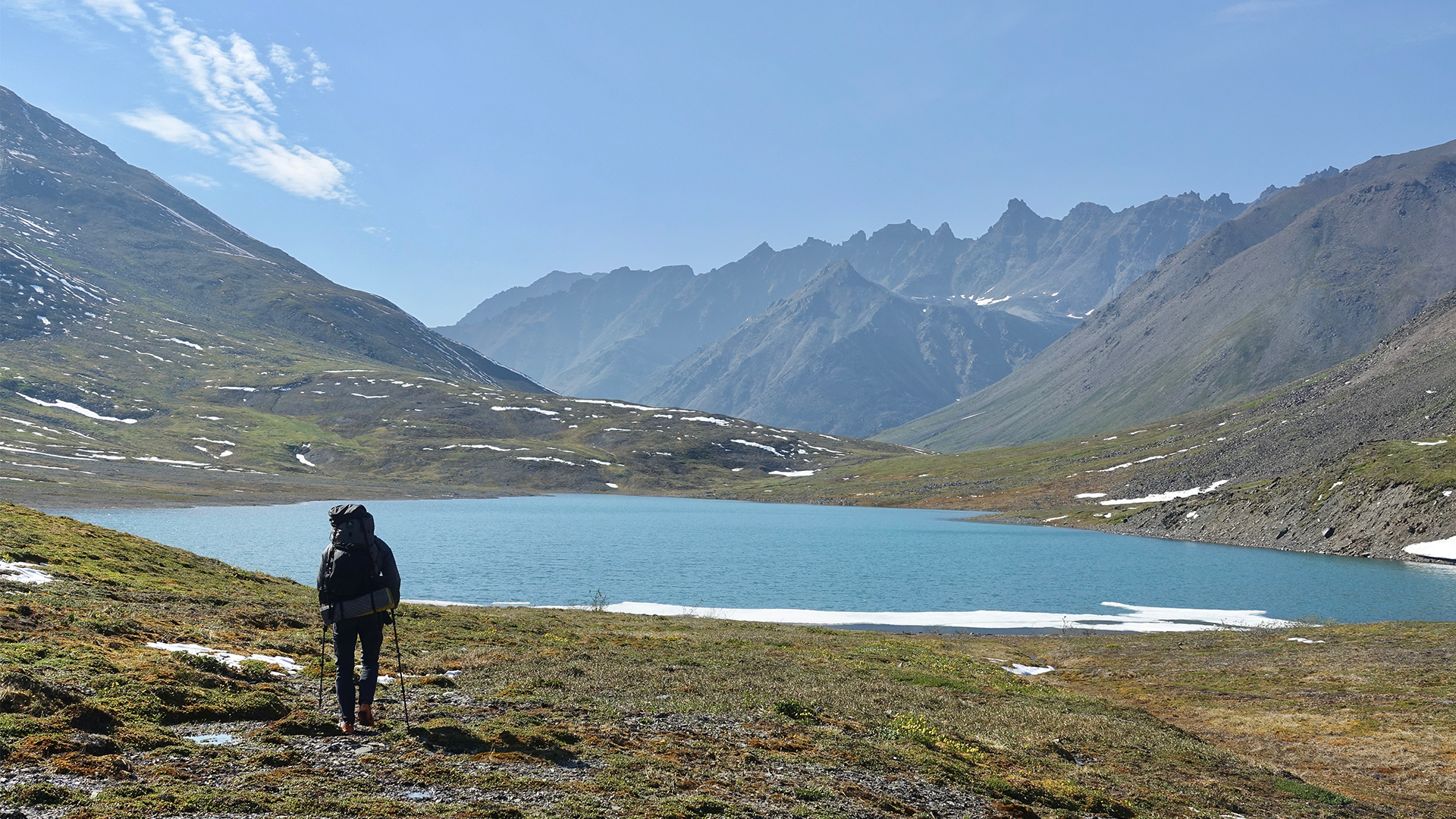
Luke and Trish Dihle were pregnant with their first child when they moved to Fairbanks in 2003. Not long after their daughter Kiah was born, Luke began hunting caribou in the Brooks Range. The October after his Kiah was born, he made his second hunt in the Arctic. There were big bulls around but, since it was the rut, he harvested a young bull so the meat wouldn’t be gamey. The solitude and quiet was like nothing he’d experienced. Watching caribou move effortlessly through the snow and the aurora streaming across the night sky left a visceral impression on him. He studied the mountains to the west and wondered what lay beyond. The deep cold was coming and he thought about what that meant for life to survive.
Back at home, that caribou accounted for some of Kiah’s first solid food. Maybe it was the diet of caribou, bear, deer, mountain goats and salmon, or maybe she’s just geared that way, but Kiah grew up with a deep reverence for wild places and hunger for adventure.
A Wild Dream
Life is short and kids grow up too fast. Despite moving back to Southeast Alaska to raise his family, the Brooks Range remained one of Luke’s favorite places. When Kiah graduated from high school in 2021, he decided to take her on a two-week hiking and packrafting trip in the central Brooks. This sort of a trip was the first of its kind for Luke. In the past, he used his time off to focus on hunting. He included his three daughters whenever he could. By 18, Kiah had taken Sitka blacktails, caribou, and even a mountain goat. Making a trip that did not involve hunting felt strange at first, but that adventure left a big impression on both Kiah and Luke. They didn’t encounter another person during the time they spent in one of the most beautiful places either had ever been.
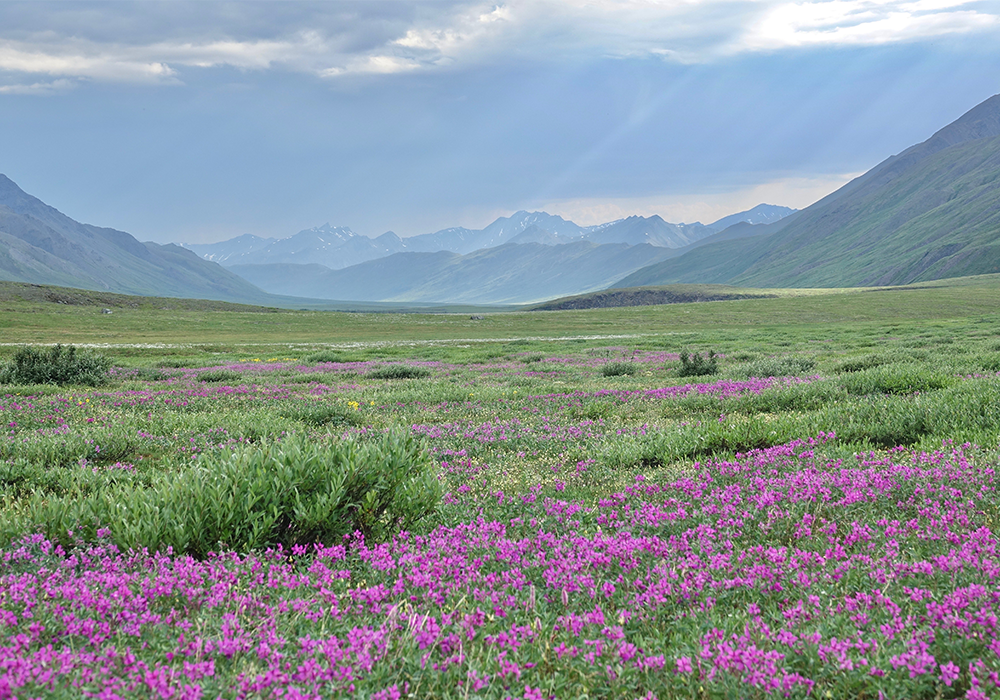
Luke and Kiah dreamed of returning to the Brooks Range for a bigger adventure. They kicked around different ideas but, both subscribing to the philosophy that we should make the most of life with the time we have, decided on a full east to west traverse. This roughly 1000-mile journey from the Canadian border to the town of Kotzebue on the Chukchi Sea is a daunting dream and involve no shortage of headaches and sacrifices to make come true.
In early June of 2025, Luke and Kiah, crammed in a small plane with a handful of food drops, flew from Fairbanks to the eastern edge of Alaska’s Arctic. Both are prone to motion sickness.
“The pilot was really impressed with how Kiah would be chatting with him like nothing was wrong right up to the moment she puked,” Luke said.
The Big Walk
The mountains and tundra were just coming to life after the long Arctic winter. One of their first nights, they were at their camp high in the mountains, the sun hanging low on the horizon, when they heard a clicking sound. Caribou’s ankle tendons make a snapping sound when they travel. Soon, a herd of caribou came so close they could have almost reached out and touched the animals. Another day, while they hiked over a mountain pass, they almost ran into a bull caribou traveling the opposite direction.
The first week of their journey passed like a wilderness dream, but then Luke injured his ankle. He was humbled by the realization that he might not be able to continue. He struggled on, watching in admiration as Kiah stepped up to carry more weight and boost morale. It took a few weeks of bad limping before Luke’s ankle stabilized enough that he thought he could complete the trek. The bugs awoke with a vengeance, but it didn’t faze either of them. The miles were filled with simplicity punctuated by encounters with grizzlies, wolves, caribou, Dall sheep, and other wildlife. The mountain scenery alternated between beautiful and extremely beautiful.
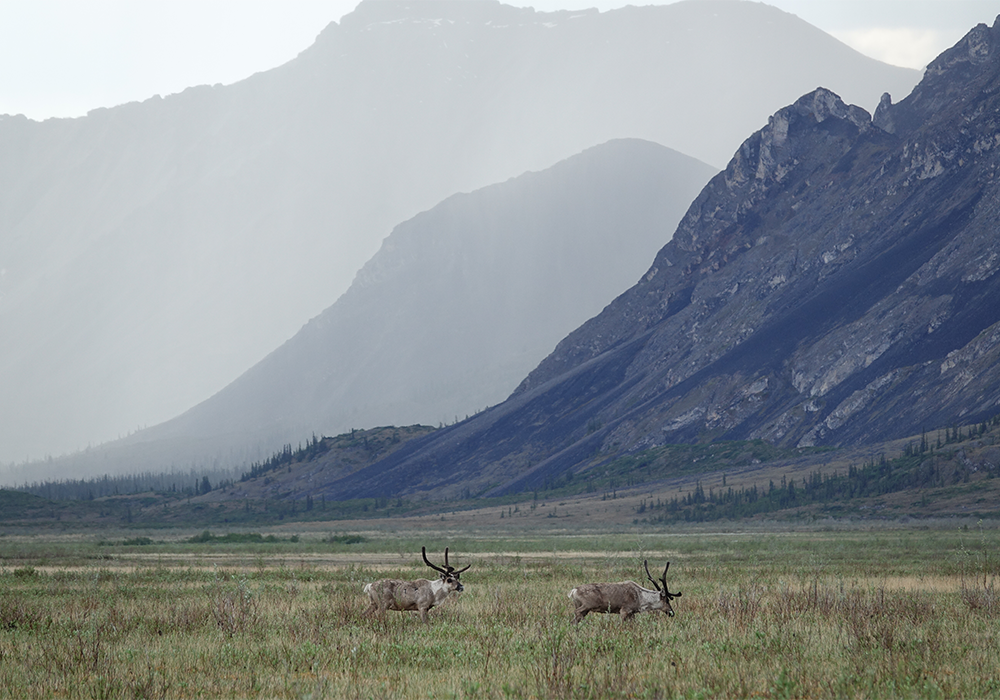
Luke has lived all his life in Alaska, except for five years in Montana. The Brooks Range, he says, is next-level wild even by Alaska standards.
“It’s basically the same since the last ice age. The feeling you get up there. The lack of noise. Being connected to the old people. The wildness. I’ve never felt those things as strongly as I do in the Brooks,” Luke said.
After a month of hiking, they made it to the Dalton Highway, which is roughly the halfway point of the traverse. There, they met Trish and their second-born daughter, Adella. The two had traveled from Southeast Alaska with gear, food, and inflatable kayaks for the last portion of the journey. They drove to Coldfoot and left boats and supplies with Coyote Air to be flown to the headwaters of the Noatak River at the end of July.
After crossing the Dalton Highway, Luke and Kiah hiked through the mountains of Gates of the Arctic National Park and Preserve. Occasionally, they had a tricky river crossing, but travel was easy for the most part. The mountains became less rugged the farther west they went. Haze from fires hung over the tundra as they passed from one valley to the next. The last mountain pass they crossed led from the Alatna River to the Noatak River valley.
Floating to the Chukchi Sea
At the headwaters of the Noatak River, they were relieved to see that no bear had messed with their boats and gear, but they hadn’t been on the river for long before they came face to face with a bear guarding its fishing hole. Chum salmon were running, and bears had come from far and wide to feast. Despite Arctic grizzlies having a reputation for being “inquisitive” and sometimes surly, they didn’t encounter an aggressive bear during their entire journey.
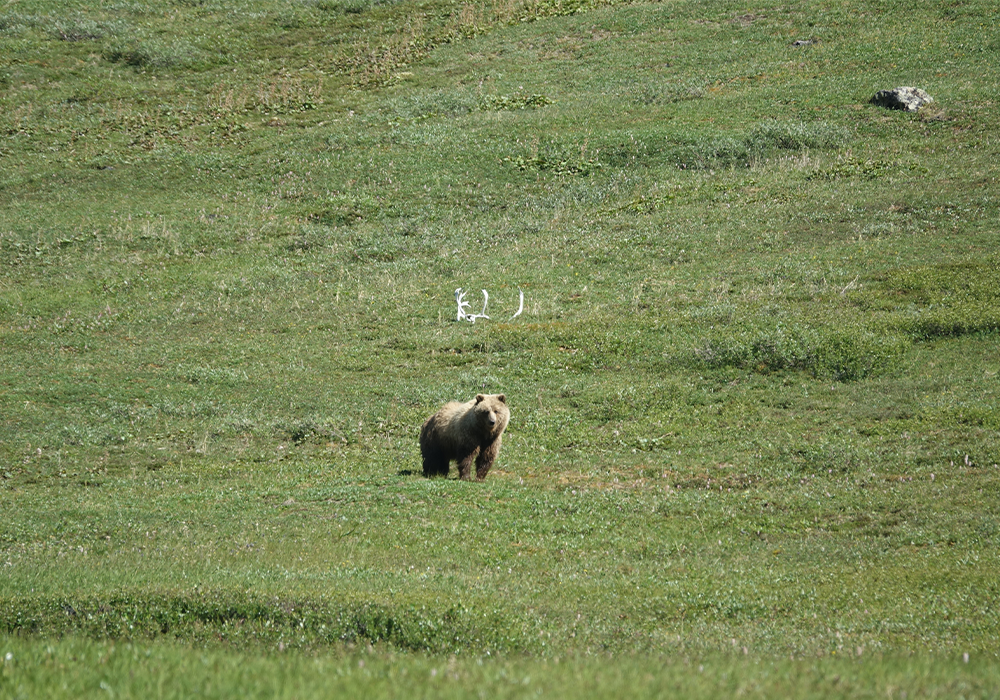
The only spooky encounter Luke and Kiah had with wildlife came as a surprise. One night they pitched their tent on a gravel bar above the Noatak River. Not long after, a big bull musk ox came out of the willows and strolled into camp looking for a fight. The tense standoff lasted for several minutes before the beast moved off.
Luke and Kiah had expected the river to be the easiest part of their trip, but their 400 miles on the Noatak turned out to be the hardest. They were running out of time and had to paddle long hours, often into big headwinds. Still, the beauty of the river as it wound through the mountains and adjoining tundra of the northern Brooks Range left a big part of the father and daughter hoping the adventure would never end. It was bittersweet when they beached their boats on the shore of Kotzebue Sound and reached the end of the journey.
“Mostly I just felt thankful to have the time in the Brooks with my daughter,” Luke said.
Trouble in Paradise
It took Luke and Kiah two months to cross the Brooks Range, the wildest stretch of public land we have left in America. After they returned home late that summer, the proposed Ambler Road positioned itself at the forefront of public land battles. Luke is strongly opposed to the project. The 211-mile industrial corridor, designed to support the development of an unknown number of foreign-owned mines, would negatively impact the wild character of the Brooks. Luke points out how fast public land is being eaten up and how there is very little true wilderness left to experience.
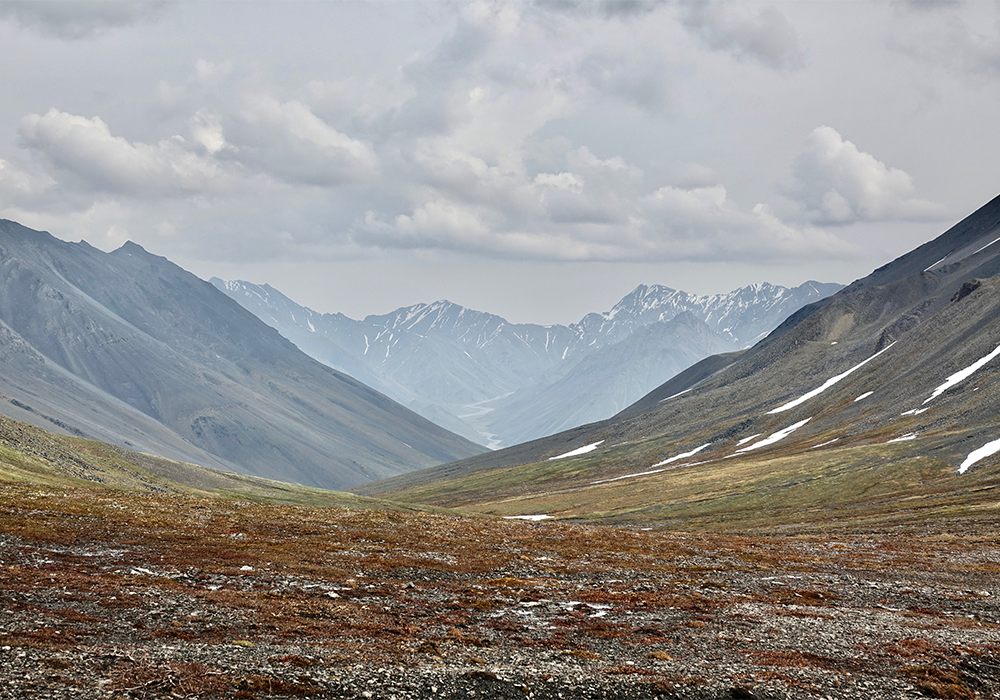
“Sure, development is needed, but God only made so much earth. Once it’s manipulated or destroyed it’s not coming back anytime soon. Ambler seems like a no-brainer. It’s not worth it,” Luke said. “It’s hard to swallow that the last best wilderness could be lost to foreign interests. Even if you don’t ever get to go to the Brooks Range, it’s going to steal something special from all of us who like to hunt, fish and wander wild places.”
Photo credits: Kiah Dihle
The federal government recently approved an appeal to reissue permits for the proposed Ambler Industrial Road. Urge the Administration to reconsider – sign the petition.
Join our email list. Nearly 20,000 hunters and anglers have committed to standing up for the Brooks Range. Join us.

